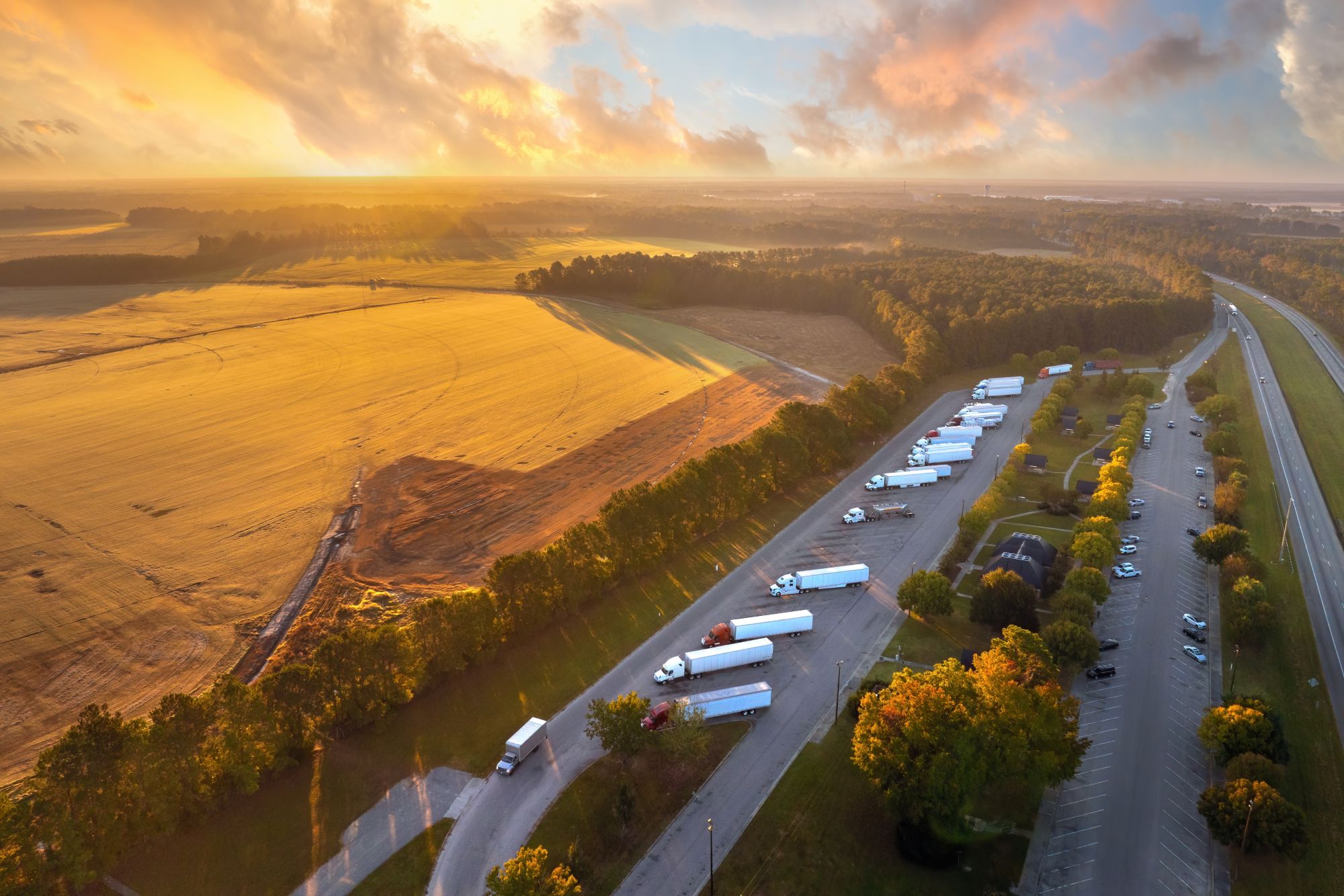
Guest
Comment devenir chauffeur routier
Créée: 26/09/2025
•
Mise à jour : 26/09/2025
Dans toute l'Europe, la demande de chauffeurs routiers professionnels n'a jamais été aussi forte. Au Royaume-Uni, la Road Haulage Association estime que [200 000 nouveaux chauffeurs routiers seront nécessaires] (https://www.rha.uk.net/news/news/detail/rha-report-200-000-hgv-drivers-needed-in-next-5-years) dans les cinq prochaines années pour assurer le fonctionnement des chaînes d'approvisionnement. La situation est la même dans la plupart des pays européens. Selon les données de l'Union internationale des transports routiers (UITR) (https://routinguk.descartes.com/resources/report-warns-of-european-shortage-of-hgv-drivers), 426 000 postes de conducteurs n'auront pas été pourvus en Europe en 2024.
Mais cela crée une opportunité. Comme [nous l'avons déjà exploré] (https://snapacc.com/newsroom/is-logistics-a-new-alternative-to-further-education-for-school-leavers/), le secteur du transport routier offre la perspective d'un travail stable aux jeunes en fin d'études qui envisagent des alternatives à l'université et aux adultes qui cherchent à se reconvertir. Devenir chauffeur routier, c'est s'assurer des revenus sûrs et une carrière structurée.
La question que beaucoup se posent est la suivante : comment devenir chauffeur routier ? La réponse ne dépend pas seulement de la formation et du permis, mais aussi de la compréhension de ce que cela signifie de rejoindre une profession qui fait tourner l'économie de l'Europe.
Qui peut devenir chauffeur routier ?
L'un des principaux attraits de la carrière de chauffeur est son accessibilité. Vous n'avez pas besoin d'un diplôme universitaire ou d'années de formation spécialisée pour commencer ; un permis de conduire standard (catégorie B) est tout ce qu'il faut avant d'obtenir des qualifications professionnelles.
L'âge minimum pour suivre une formation est de 18 ans au Royaume-Uni et dans l'ensemble de l'UE, ce qui signifie que les jeunes qui quittent l'école peuvent passer directement du permis de conduire à la formation professionnelle de chauffeur de poids lourds. Cela dit, de nombreuses entreprises préfèrent que les conducteurs internationaux aient au moins 21 ans, compte tenu des responsabilités supplémentaires qu'implique le transport de marchandises sur de longues distances.
L'aptitude médicale est également importante. Chaque candidat doit passer un examen médical avant de pouvoir obtenir un permis de conduire pour poids lourds. Au Royaume-Uni, cela implique une série de tests, [y compris] (https://www.hgvt.co.uk/hgv-medical/) des contrôles de la vue, des mesures de la tension artérielle et des dépistages de maladies telles que l'épilepsie, les maladies cardiaques ou l'apnée du sommeil.
Les pays européens appliquent les mêmes normes médicales à l'échelle de l'UE, avec des renouvellements réguliers garantissant que les conducteurs restent en bonne santé tout au long de leur carrière.
Combien gagne un chauffeur routier ?
Pour de nombreuses personnes qui envisagent de se lancer dans la conduite professionnelle, une question essentielle se pose : combien gagnent les chauffeurs routiers ?
La réponse varie en fonction du lieu, de l'expérience et du type de travail effectué, mais dans toute l'Europe, la profession offre une rémunération compétitive par rapport à d'autres emplois de débutant.
● Un nouveau conducteur au Royaume-Uni commencera généralement avec un salaire annuel d'environ 27 000 £. Ceux qui s'orientent vers le travail long-courrier, en particulier sur les lignes internationales, peuvent voir leur rémunération grimper jusqu'à 45 000 £ - parfois plus s'ils transportent des charges spécialisées ou dangereuses. ceux qui manipulent des charges spécialisées, des marchandises dangereuses ou qui opèrent au-delà des frontières.
● En [Espagne] (https://www.salaryexpert.com/salary/job/truck-driver/spain), les salaires ont tendance à être moins élevés qu'au Royaume-Uni, généralement autour de 36 600 €, bien que les grandes entreprises de logistique des grandes villes puissent offrir davantage.
● Pologne a connu une forte demande de chauffeurs ces dernières années, mais les salaires restent modestes, avec une moyenne d'environ 92 400 PLN (environ 21 690 €).
● Roumanie se situe au bas de l'échelle, les conducteurs gagnant généralement 80 550 RON (16 000 €), bien que les contrats de transport international puissent augmenter considérablement le salaire net.
Bien entendu, le salaire n'est pas tout. De nombreuses entreprises offrent le paiement des heures supplémentaires, des indemnités de repas ou des primes pour avoir atteint les objectifs de livraison. Et comme la demande de chauffeurs ne montre aucun signe de ralentissement, ce travail offre également un niveau de sécurité que peu d'autres carrières de débutant peuvent égaler.
De quel permis de conduire un camion ai-je besoin ?
Avant de pouvoir prendre le volant d'un camion, vous devez avoir le bon permis. Au Royaume-Uni, cela signifie qu'il faut passer d'un permis de conduire standard à ce que l'on appelle officiellement un permis LGV (Large Goods Vehicle) ou HGV (Heavy Goods Vehicle). Ces termes sont souvent utilisés de manière interchangeable, mais ils couvrent tous deux les mêmes catégories de conduite professionnelle.
Certaines personnes commencent par obtenir un permis de catégorie C1, qui couvre les véhicules de taille moyenne de 3,5 à 7,5 tonnes, souvent utilisés pour les petits camions de livraison.
Toutefois, la plupart des aspirants chauffeurs routiers passent directement le permis de catégorie C, parfois appelé permis poids lourds de classe 2. Ce permis permet de conduire des véhicules rigides de plus de 7,5 tonnes. Pour ceux qui souhaitent passer aux camions articulés - les véhicules plus grands couramment utilisés sur les longues distances et les itinéraires internationaux - le permis de catégorie CE (classe 1) est nécessaire.
Ces qualifications s'accompagnent d'un certificat de compétence professionnelle (CCP) pour les conducteurs, une obligation légale au Royaume-Uni et dans l'Union européenne. Ce certificat implique un mélange de formation initiale et de mises à jour périodiques, conçues pour maintenir les conducteurs à jour en matière de sécurité, de réglementation et de compétences routières.
Ce système reflète le cadre d'octroi de licences à l'échelle de l'UE. Les principales différences entre les pays résident dans les organismes de formation, les coûts impliqués et, dans certains cas, la disponibilité des créneaux d'examen.

Comment obtenir son permis de conduire poids lourd ?
L'obtention du permis poids lourd est la première étape vers la conduite professionnelle. Au Royaume-Uni, vous pouvez entamer la procédure une fois que vous êtes titulaire d'un permis de conduire de catégorie B standard. Vous pouvez ensuite demander un permis de conduire provisoire, qui vous permet d'entamer une formation à la conduite de grands véhicules de transport de marchandises.
La formation elle-même combine des éléments théoriques et pratiques : des sessions en classe sur la sécurité routière et les réglementations, suivies d'une conduite supervisée dans des véhicules lourds. Les candidats doivent également suivre des modules pour obtenir le certificat de compétence professionnelle (CCP), qui garantit que les conducteurs sont équipés non seulement pour conduire des véhicules en toute sécurité, mais aussi pour gérer les exigences quotidiennes du transport de marchandises.
Combien coûte le métier de chauffeur routier ?
L'une des questions les plus fréquentes que se posent les personnes qui envisagent cette carrière est de savoir combien coûte la formation de chauffeur routier. Au Royaume-Uni, les prix varient en fonction de l'organisme de formation, du lieu et de l'obtention d'un permis de catégorie C ou d'un permis de catégorie CE, plus avancé. En moyenne, les nouveaux conducteurs doivent compter entre 2 000 et 3 500 livres sterling pour couvrir les examens médicaux, les frais de permis provisoire, les examens théoriques, la formation pratique, les modules du CCP et l'examen de conduite final. Certaines entreprises, en particulier les grandes entreprises de logistique, proposent des programmes de subvention ou de financement intégral de la formation en échange d'un engagement professionnel, ce qui rend la voie plus accessible.
Ailleurs en Europe, les chiffres ne sont pas très différents. En Espagne, la formation coûte généralement entre 2 000 et 3 000 euros pour une formation complète et une certification. En Pologne, le chiffre est plus bas, avec une moyenne de 1 500 à 2 500 euros. En Roumanie, les coûts de formation sont parmi les plus bas d'Europe, de nombreux candidats devant débourser entre 1 000 et 1 800 euros pour se qualifier, bien que les salaires de débutants tendent à refléter cette faible barrière à l'entrée.
Combien de temps faut-il pour devenir chauffeur routier ?
Le temps nécessaire pour obtenir le titre de conducteur de poids lourd dépend de l'endroit où vous suivez votre formation, du type de permis que vous souhaitez obtenir et de la rapidité avec laquelle vous pouvez obtenir des dates d'examen. Au Royaume-Uni, la plupart des gens terminent leur formation et passent leurs examens dans un délai de deux à quatre mois. Certains cours intensifs réduisent le processus à quelques semaines, mais de nombreux conducteurs estiment que l'espacement des leçons leur permet d'assimiler les compétences plus efficacement.
En Espagne et en Pologne, le processus est similaire, même si les listes d'attente pour les places d'examen sont plus longues. En Pologne, la forte demande de conducteurs professionnels a créé des goulets d'étranglement dans les centres de formation, ce qui signifie que certains candidats attendent plusieurs mois avant de passer leur examen pratique. La Roumanie a l'un des parcours les plus rapides, la formation et l'examen étant souvent achevés en huit à douze semaines.
Et l'apprentissage ne s'arrête pas une fois que vous avez obtenu votre permis. Chaque conducteur professionnel doit suivre 35 heures de formation au CAP tous les cinq ans, afin de maintenir ses compétences à jour et de s'assurer qu'il est prêt à se conformer aux dernières réglementations et normes de sécurité.
Combien de temps un chauffeur routier peut-il conduire ?
Une fois que vous êtes qualifié, le travail est assorti de limites strictes quant au temps que vous pouvez passer derrière le volant. Ces limites sont conçues pour protéger les conducteurs et les autres usagers de la route en réduisant la fatigue.
Les règles sont les mêmes au Royaume-Uni et dans l'Union européenne. Les conducteurs peuvent passer [un maximum de neuf heures au volant] (https://www.gov.uk/drivers-hours/eu-rules#:~:text=9%20hours%20in%20a%20day,in%20any%202%20consecutive%20weeks) chaque jour, ce qui peut être porté à dix heures deux fois par semaine. Les limites hebdomadaires sont de 56 heures, avec un maximum de 90 heures sur deux semaines consécutives.
Un conducteur doit également prendre une pause d'au moins 45 minutes après 4,5 heures de conduite. Il a également droit à des périodes de repos quotidiennes et hebdomadaires pour récupérer avant de reprendre le travail.
Ces règles sont étroitement surveillées, des tachygraphes étant installés dans les véhicules pour enregistrer les heures et garantir le respect des règles. Pour ceux qui travaillent sur des trajets longue distance, comme les conducteurs espagnols couvrant la péninsule ibérique ou les transporteurs polonais acheminant des marchandises à travers les frontières orientales de l'Union européenne, ces limites déterminent le rythme du travail. Elles déterminent quand et où les conducteurs s'arrêtent, ce qui fait de l'accès à des aires de repos sûres et sécurisées un élément essentiel de la journée de travail.
Débuter comme chauffeur routier
Devenir chauffeur routier, ce n'est pas seulement passer des examens. Il s'agit d'accéder à un rôle qui comporte de réelles responsabilités, mais qui offre également des possibilités à long terme. Avec le bon permis, la bonne formation et la détermination d'affronter la vie sur la route, c'est une carrière qui peut offrir à la fois stabilité et progression.
Chez SNAP, nous savons à quoi ressemblent ces trajets. C'est pourquoi nous travaillons avec des flottes et des conducteurs dans toute l'Europe pour les rendre plus sûrs, plus simples et plus confortables, qu'il s'agisse de parkings sécurisés, de meilleures installations sociales ou d'outils numériques intelligents qui permettent de gagner du temps et de réduire le stress. Que vous débutiez ou que vous conduisiez depuis des années, nous sommes là pour vous accompagner à chaque kilomètre.
Téléchargez dès aujourd'hui l'application [intruck app] (https://intruckapp.com/download/) pour trouver des parkings, des installations et des services de confiance, quel que soit l'endroit où vous vous rendez.



